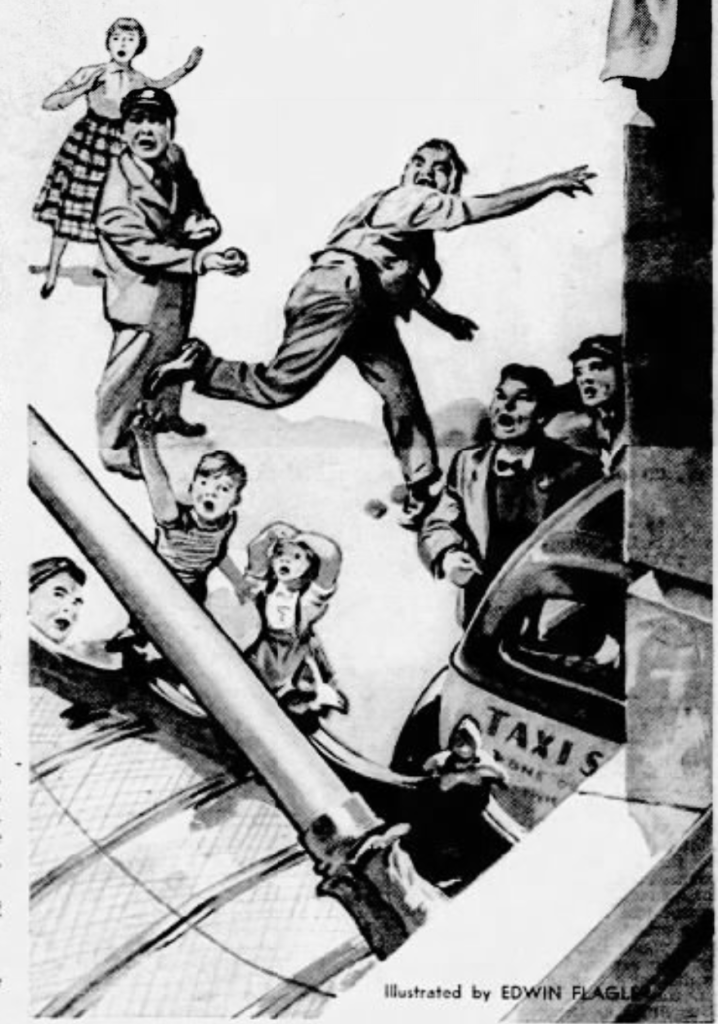Titanic Thompson, the man who’d bet on anything, is one of America’s greatest hustlers. A pro-level golfer, he preferred gambling, staging bizarre proposition bets, winning and losing millions; he died penniless, leaving five dead men in his wake.

The seeds of the conman’s life were sewn at a very young age for Titanic Thompson. He was born Alvin Clarence Thompson in 1892, into extreme poverty in a backwater town in the Missouri part of the Ozarks.
With very limited formal job prospects, Alvin inherited a passion for gambling from his father, who was playing poker the night he was born.
That was about all he got from his dad, who upped and left when he was barely a few weeks old, which may explain the deep sense of self-preservation and the inability to form lasting relationships that saw him marry five times.
Titanic’s skill was innate: manipulating coins with amazing dexterity, calculating card probability and appreciating the importance of having an edge without necessarily understanding the concept of expected value.
The combination of hunger for wealth that hog farming – his step-father’s profession – could never provide, his risk-taking nature and the era of prosperity provided the perfect mix. In 1909, at the age of 16, Thompson left town and embarked on an unequalled life of grift, making, and then losing millions many times over.
Titanic was one of the greatest exponents of the art of the grift. A grift is a hustle or a con, like convincing someone to participate in a dice game, hiding the fact that it is loaded or using sleight of hand to fix a card game like Chase the ace.
Titanic started off pulling those kinds of scams but became famous for far more imaginative hustles.
He approached them like a professional athlete preparing for an event, and many said he could have been a professional golfer had he chosen.
It took natural-born skill, a huge amount of preparation and training and involved significant risk.
How Titanic Thompson got his name
There are many theories about how Titanic Thompson got his name; the most colourful suggested he’d escaped the sinking of the Titanic in 1912 by dressing as a woman.
The truth, according to the excellent biography by Kevin Cook, is that weeks after the most famous shipwreck of all time, Alvin was hustling pool in Joplin, Missouri.
Entering a joint belonging to Snow Clark, Thompson hustled every player in the joint, including the owner, who was regarded as the best player in town.
Collecting his $500 wager, Alvin noticed a sign on the way out “$200 to any man that jumps over my new pool table“. The challenge was like a red rag to a bull “I can do it” claimed Alvin “I can outjump a herd of bullfrogs“.
The sign was clearly meant as a conversation piece rather than a serious challenge. The table was 9 ft by 4.5 ft, 30 inches off the floor, with a 54-inch surface. Even an Olympic Hurdler would think twice, as clearing the table was only half the problem; you’d have to survive the landing.
But this is where Alvin showed his amazing problem-solving skills and lateral thinking. Walking out of Snow Clark’s he found a cheap motel where he’d paid for an old mattress, which he dragged back to the pool hall, much to the bemusement of the owner, and placed on the far side of the obstacle.
Alvin then jumped head first, doing a mid-air somersault and landing safely on the mattress. He collected his $200 and a name that would stick with him for life.
Someone asked Snow Clark who the mystery hurdler was, he simply responded, “I don’t rightly know, but it ought to be Titanic. He sinks everybody.”
Conning Al Capone
Titanic once conned Al Capone out of $500 with one of his favourite grifts – claiming to be able to throw a lemon over a five-storey building.
Like all of Titanic’s grifts, the key was combining meticulous planning with a sense of innocent spontaneity.
Whether it was a lemon or a peanut, Titanic would have collaborated with a fruit vendor on the sidewalk, where he would nonchalantly select the piece of fruit he had already stuffed lead before launching it over the roof to the amazement of the mark.

But Capone was no dummy; he chose his own lemon and squeezed it dry, handing that to Thompson. But showing the presence of mind that marked him out as the ultimate hustler, Thompson was capable of thinking on his feet and planning for every eventuality.
Employing an elaborate wind-up motion allowed him the cover to switch Capone’s squashed lemon for his loaded one before he dully hurled it over the five-storey roof.
Titanic pocketed his $500, which would have been enough to live comfortably for months, but there were safer ways to grift a living. Capone was one of the most violent mobsters of his generation and would have killed Thompson for much less.
Thompson thrived on the risk inherent in grifting, and though with Capone, he was smart enough to know not to push his luck again, money was the means, not the end.
Driving a golf ball over 500 yards
If an Amateur golfer told you he could drive a ball over 500 yards, how much would you be willing to bet against it? Consider that the current competitive world record is 516 yards. You might think it was free money, but when Titanic Thompson laid down the gauntlet in the winter of 1924, plenty took that bet, and lost.
So did Titanic manage to drive a golf ball over 500 yards, back in the Winter of 1924? The answer is yes. With patience and planning he had waited for exactly the right conditions. He brought the gaggle of punters, all confident this was the safest bet in history, to a tee backing onto a frozen lake.
He set himself at the ball, then at the moment he was ready to pull the trigger, swivelled 180 degrees and drove the ball across the frozen lake, its momentum and the glassy surface taking it way beyond the required distance.`
He turned and collected his winning bets. A perfect grift, months in the making, a mixture of skill, cunning, intelligence and bravado. Things that certainly don’t come for free, especially in the face of men who didn’t like being made fools of.
20 miles to Joplin
Early in his grifting career, Titanic would go fishing outside Joplin, with two friends named Beanie Benson and Hickory McCullough. The fishing was social and of secondary importance to the drinking and the banter.
On the way back to town, Thompson bet his buddies that the sign saying 20 miles to Joplin was wrong; he was convinced it was only 15 miles.
Beanie and Hickory thought this would be an easy $100, placing great faith in the authorities. Titanic upped the bet to $500, knowing for certain the sign was wrong because he had dug it up the day before and moved it five miles closer to town.

Living for the grift
For Thompson, the chase was what drove him, that and the challenge of dreaming up and executing grifts.
- The one-armed green keeper – He would pose the one-armed golf world champion as a green keeper, then bet unsuspecting players that they couldn’t beat him.
- The taxi stunt – He once won $10,000 betting on the frequency that cab firms would appear; he’d paid the firm in advance to send a fleet right on cue.
- Throwing cards into a hat – He’d bet travellers that he could throw 50 cards from a deck into his Darby (hat), which seemed a completely unachievable feat for the average person. Titanic was far from normal, his average was 200 in a row, and record streak was 406.
Dying art of the grift
Titanic Thompson is remembered with a kind of reverence for the sheer ingenuity of his grifts and the dedication he showed in honing his skills, whether tossing dice and horseshoes or playing poker and golf.
But his life wasn’t a game. Being exposed as a hustler could risk arrest, injury or worse. Titanic Thompson admitted to killing five men, but risk-taking seemed part of his DNA.
He ended up in a retirement home in Florida, conning the residents at cards, but with just a few hundred dollars to his name, which he kept in a sock. That is where the legend of Titanic Thompson finally ended; he died on May 19th, 1974, after a massive stroke.
No Free Lunch
There is no such thing as a free lunch, but if you’re hungry to find out why, we’re here to help.
You can learn the meaning and origin of the no free lunch concept, as well as the broader philosophy behind the idea that nothing can ever be regarded as free.
We look at our relationship with money and truth, examining all of the supposed shortcuts, life hacks and get-rich-quick schemes.
